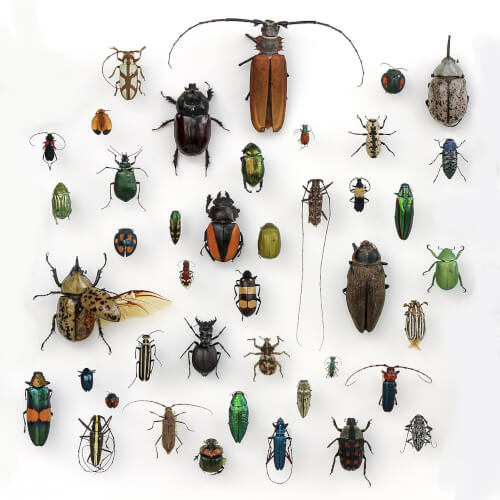



Insects are invertebrate bugs, or arthropods, belonging to the class Insecta. Insects are the most diverse group of animals on Earth, with over a million known species. They play important roles in ecosystems as pollinators, decomposers, and as a food source for other animals.
Insects undergo a process called metamorphosis, where they transform from egg to larva to pupa, and finally to an adult form. They have specialized mouthparts for feeding on different types of food, such as nectar, leaves, or other insects. Insects can be found in almost every habitat on Earth, from forests and deserts to rivers and even underground.
Insects have a few special characteristics that make them different from other bugs, such as spiders:
 When honeybees find a great source of nectar or pollen, they return to the hive and perform a dance known as the "waggle dance." The honeybee moves in a figure-eight pattern while vibrating its abdomen. The direction and duration of the dance communicate important information about the location of the food source to other worker bees. (It also helps them get their groove on).
When honeybees find a great source of nectar or pollen, they return to the hive and perform a dance known as the "waggle dance." The honeybee moves in a figure-eight pattern while vibrating its abdomen. The direction and duration of the dance communicate important information about the location of the food source to other worker bees. (It also helps them get their groove on).
Fireflies, also known as lightning bugs, are famous for their ability to light up the night sky. Scientists call this bioluminescence, or the ability of living things to create their own light. Certain algae and mushrooms also share this unique ability.
Fireflies have organs called photic organs located on their abdomen. When oxygen (O2) mixes with the chemicals inside these organs, it creates a chemical reaction that produces light without generating heat. The light produced by fireflies can help them attract mates or warn predators to stay away, and each firefly species has its own unique pattern of light flashes.
The walking stick insect is a master of disguise. They have special cells called chromatophores in their bodies. These cells contain pigments that can expand or contract, causing the insects to change color. By adjusting the size of these pigment cells, walking sticks can mimic the colors of leaves, branches, or even flowers.
Bombardier beetles have special glands inside their abdomens that produce a mixture of chemicals. When they sense danger, they release these chemicals in a rapid reaction. The mixture gets extremely hot, reaching temperatures close to boiling, and it creates a loud popping sound and a burst of noxious gas. This explosion scares away predators like spiders, frogs, and even other insects.
What makes this defense mechanism even more incredible is that bombardier beetles can aim their chemical blasts with incredible accuracy. They can turn their bodies and shoot the chemicals in any direction, giving them a great advantage in escaping from danger.
Water striders are tiny insects with long, slender legs that allow them to glide effortlessly on the surface of ponds, lakes, and even calm streams. What's even more amazing is that they can perform this feat because of something called surface tension.
Surface tension is like an invisible skin on the water's surface that makes it act like a trampoline. The water strider's legs are designed in a special way with tiny hairs that help distribute their weight and prevent them from breaking the surface tension. This enables them to stay afloat and walk on the water without sinking.
In a 2019 study published in the scientific journal Science Advances, researchers tested whether bees could tell apart even and odd numbers. The bees learned to expect a sweet reward or a bitter-tasting punishment with the number of shapes on cards.
Surprisingly, the bees became quite good at picking even or odd numbers with 80% accuracy. They were even able to recognize numbers outside of their training set, although not as accurately. While scientists aren't exactly sure how the bees accomplished this, they suspect the bees might be counting or grouping the shapes on the cards or looking for patterns.